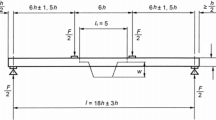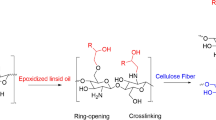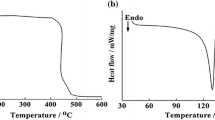Abstract
This study aims to make environment-friendly plywood panels acceptable in terms of both mechanical and physical properties using chitosan as a natural binder. Five-layer poplar plywood specimens were prepared with two different commercial adhesives, namely urea-formaldehyde (UF) and methylene diphenyl isocyanate (MDI), and compared with chitosan (CH). For evaluation, mechanical properties such as modulus of rupture (MOR), modulus of elasticity (MOE), glue line shear strength, surface soundness, and physical properties such as thickness swelling (TS), water absorption (WA) of the samples were studied. Variable parameters were: adhesive type (UF, MDI, and CH), adhesive content (2, 4, and 6 wt%), and adhesive spread rate (150 and 180 g/m2). Other parameters such as pressing time (10 min), press pressure (30 kg/cm2) and press temperature (140 ºC) were held constant. Data analysis revealed that the mechanical properties differed significantly among the board types. Based on the findings of this study, the MOR properties of the panels slightly increased when the resin content increased from 150 to 180 g/m2. The results of shear strength and surface soundness showed that boards made with chitosan as a binder, had the same results as those made with UF resin. In general, WA and TS decreased (improved) with the increase of resin content. The test results showed that the lowest TS observed in chitosan boards was 4% chitosan with a 180 g/m2 spread rate, which is better than UF plywood and, close to the results of MDI specimens. According to the measured parameters, 4% chitosan with a spread rate of 180 g/m2 can be considered the optimal binder composition for plywood manufacturing. The overall results show that chitosan has potential as a replacement resin material for plywood manufacturing.





Similar content being viewed by others
References
Xi X, Pizzi A, Lei H, Zhang B, Chen X, Du G (2022) Environmentally friendly chitosan adhesives for plywood bonding. Int J Adhes Adhes 112:103027
Norström E, Demircan D, Fogelström L, Khabbaz F, Malmström E (2018) Chap. 4: Green Binders for Wood Adhesives. Applied Adhesive Bonding in Science and Technology, pp 49–71
Heinrich LA (2019) Future opportunities for bio-based adhesives –advantages beyond renewability. Green Chem 21:1866–1888
Anonymous (2012) Chemical agents and related occupations. International Agency for Research on Cancer (IARC) monographs on the evaluation of carcinogenic risks to humans. Volume 100 A review of human carcinogens.
Todorovic T, Norström E, Khabbaz F, Brücher J, Malmström E, Fogelström L (2021) A fully bio-based wood adhesive valorizing hemicellulose-rich sidestreams from the pulp industry. Green Chem 23:3322–3333
Pichelin F, Nakatani M, Pizzi A, Wieland S, Despres A, Rigolet S (2006) Structural beams from thick wood panels bonded industrially with formaldehyde-free tannin adhesives. For Prod J 56:31–36
Tabarsa T, Jahanshahi SH, Ashori A (2011) Mechanical and physical properties of wheat straw boards bonded with tannin modified phenol– formaldehyde adhesive. Compos Part B 42:176–180
Ghaffar SH, Fan M (2014) Lignin in straw and its applications as an adhesive. Int J Adhes Adhes 48:92–101
Pizzi A (2006) Recent developments in eco-efficient bio-based adhesives for wood bonding: opportunities and issues. J Adhes Sci Technol 20:829–846
Mo X, Sun XS (2013) Soy proteins as plywood adhesives: formulation and characterization. J Adhes Sci Technol 27:2014–2026
Liu Y, Li K (2007) Development and characterization of adhesives from soy protein for bonding wood. Int J Adhes Adhes 27:59–67
Umemura K, Kawai S (2007) Preparation and characterization of maillard reacted chitosan films with hemicellulose model compound. J Appl Polym Sci 108:2481–2487
Umemura K, Kaiho K, Kawai S (2009) Characterization of bagasse-rind particleboard bonded with chitosan. J Appl Polym Sci 113:2103–2108
Huang E, Cao Y, Duan X, Yan Y, Wang Z, Jin C (2021) Cross-linked chitosan as an eco-friendly binder for high-performance wood-based fiberboard. Int J Polm Sci 8671384:1–7
Mati-Baouche N, Elchinger PH, Baynast H, Pierre G, Delattre C, Michaud P(2014) () Chitosan as an adhesive. Eur Polym J 60:198–212
Gorgij R, Tarmian A, Karimi AN (2014) Effect of chitosan on the mold resistance of wood and its surface properties. Int J Lignocel Prod 1(1):39–49
Silvestre J, Delattre C, Michaud P, Baynast H (2021) Optimization of chitosan properties with the aim of a water resistant adhesive development. Polymers 13:4031
Kim U-J, Lee YR, Kang TH, Choi JW, Kimura S, Wada M (2017) Protein adsorption of dialdehyde cellulose-crosslinked chitosan with high amino group contents. Carbohyd Polym 163:34–42
Jiang Y, Liu B, Xu J, Pan K, Hou H, Hu J, Yang J (2018) Cross-linked chitosan/β-cyclodextrin composite for selective removal of methyl orange: adsorption performance and mechanism. Carbohyd Polym 182:106–114
Alam Md N, Christopher LP (2018) Natural cellulose-chitosan cross-linked superabsorbent Hydrogels with Superior Swelling Properties. ACS Sust Chem Eng 6(7):8736–8742
Ji X, Dong Y, Yu R, Du W, Gu X, Guo M (2018) Simple production of medium density fiberboards (MDF) reinforced with chitosan. Holzforschung 72:275–281
Basturk MA (2012) Heat applied chitosan treatment on hardwood chips to improve physical and mechanical properties of particleboard. BioResources 7(4):4858–4688
Author information
Authors and Affiliations
Corresponding author
Ethics declarations
Financial Support
No financial support was received.
Conflict of Interest
The authors declare that they have no conflict of interest.
Disclosures & Disclaimer
This article does not contain any studies involving animals or human participants performed by any of the authors.
Ethical Approval
This article does not contain any studies with human participants or animals performed by any of the authors.
Informed Consent
None.
Additional information
Publisher’s Note
Springer Nature remains neutral with regard to jurisdictional claims in published maps and institutional affiliations.
Electronic Supplementary Material
Rights and permissions
About this article
Cite this article
Talaei, A., Ashori, A. & Heydari, V. A Comparative Study on the Mechanical and Physical Properties of Plywood Panels Prepared by Chitosan as Bio-Adhesive. J Polym Environ 30, 4263–4270 (2022). https://doi.org/10.1007/s10924-022-02523-0
Accepted:
Published:
Issue Date:
DOI: https://doi.org/10.1007/s10924-022-02523-0




